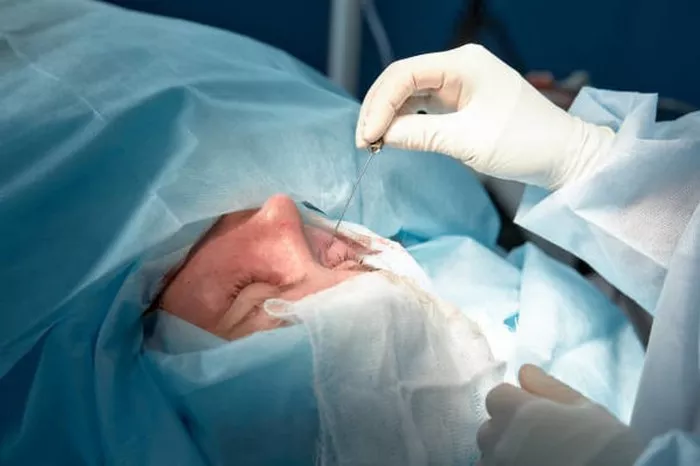Upper blepharoplasty, also known as upper eyelid surgery, is a cosmetic procedure that addresses sagging or drooping upper eyelids. It involves removing excess skin, tightening the underlying muscles, and potentially repositioning or removing fat deposits to create a more youthful and refreshed appearance. One of the common concerns when considering upper blepharoplasty is the cost of the surgery. In this article, we will explore the factors that influence the cost of upper blepharoplasty and provide some general information on the pricing of this procedure.
Understanding Upper Blepharoplasty Surgery
Upper blepharoplasty is performed to correct various issues related to the upper eyelids, including:
Sagging or drooping upper eyelids: Excess skin and weakened muscles can cause the eyelids to droop, potentially obstructing vision or creating a tired appearance.
Puffy or bulging upper eyelids: Fatty deposits can accumulate in the upper eyelids, leading to a swollen or puffy appearance.
Excess skin: Over time, the skin of the upper eyelids may lose elasticity, resulting in loose or wrinkled skin.
Upper blepharoplasty can address these concerns by removing excess skin and fat and tightening the underlying structures, resulting in a more rejuvenated and youthful appearance.
Factors That Influence the Cost of Upper Blepharoplasty
The cost of upper blepharoplasty can vary depending on several factors. It is important to note that the pricing can vary significantly between different geographical locations, surgical practices, and individual surgeons. Here are some factors that can influence the cost of upper blepharoplasty:
Surgeon’s Expertise and Experience: The qualifications, experience, and reputation of the plastic surgeon performing the procedure can affect the cost. Highly skilled and experienced surgeons may charge higher fees due to their expertise and track record of successful outcomes.
Geographic Location: The cost of living and healthcare services can vary across different regions. Generally, urban areas and regions with a higher cost of living may have higher surgical fees.
Surgical Facility: The type and location of the surgical facility can impact the overall cost. Hospitals or accredited surgical centers typically have higher fees compared to outpatient clinics or office-based facilities.
Extent of the Procedure: The complexity and extent of the upper blepharoplasty procedure can influence the cost. If additional procedures, such as lower blepharoplasty or brow lift, are performed in combination, the total cost may increase.
Anesthesia: The type of anesthesia used during the procedure can affect the cost. General anesthesia tends to be more expensive compared to local anesthesia with sedation.
Pre- and Post-operative Care: The cost of pre-operative consultations, medical tests, and post-operative follow-up visits are usually factored into the overall cost of the procedure. It is important to understand what is included in the quoted price and if there are any additional fees for these services.
Insurance Coverage: In some cases, upper blepharoplasty may be considered a medical necessity rather than a cosmetic procedure. If the sagging eyelids obstruct vision, insurance coverage may be available to help cover the cost. However, insurance coverage for upper blepharoplasty varies, and specific criteria must be met for approval.
General Pricing Information
The cost of upper blepharoplasty can range widely based on the factors mentioned above. It is essential to consult with a qualified plastic surgeon to obtain an accurate estimate for your specific case. However, as a general guideline, the average cost of upper blepharoplasty in the United States can range from $2,000 to $5,000.
It is important to note that the quoted price typically includes the surgeon’s fee, anesthesia fees, surgical facility fees, and related expenses. However, additional costs such as pre-operative consultations, medical tests, post-operative medications, and follow-up visits may not be included in the initial quote. It is crucial to have a clear understanding of what is covered in the quoted price and inquire about any potential additional costs.
Financing Options
For individuals who may find the upfront cost of upper blepharoplasty challenging to manage, there are financing options available. Many plastic surgery practices offer payment plans or financing options through reputable healthcare financing companies. These plans allow patients to pay for the procedure in affordable monthly installments, making the cost more manageable over time.
Consultation with a Plastic Surgeon
If you are considering upper blepharoplasty, it is essential to schedule a consultation with a qualified and experienced plastic surgeon. During the consultation, the surgeon will evaluate your specific concerns, discuss your goals, and provide a personalized treatment plan. They will also provide a detailed breakdown of the costs involved in the procedure and answer any questions you may have.
In conclusion, the cost of upper blepharoplasty can vary depending on several factors, including the surgeon’s expertise, geographic location, surgical facility, extent of the procedure, anesthesia, and pre- and post-operative care. It is important to consult with a plastic surgeon to obtain an accurate estimate based on your unique circumstances. Remember to prioritize the qualifications and experience of the surgeon over cost alone to ensure a safe and successful outcome.


